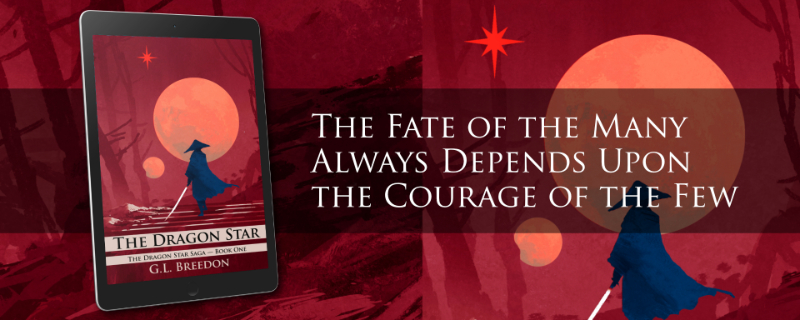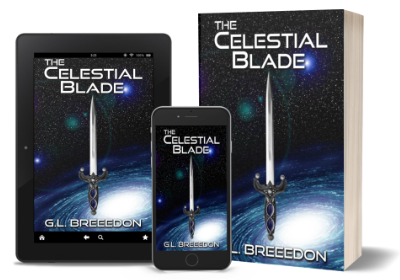With The Dragon Star finally available at Amazon US and Amazon UK (as well as all other Amazon outlets) I thought readers might be interesting in the story behind the storytelling. I’ve previously posted about writing the Miscellany of Fragments and Artefacts and the Gazetteer, as well as making the maps of the world. What follows is a sort of brief textual documentary of the other aspects of writing of The Dragon Star.
I haven’t always wanted to write an epic fantasy series with massive installments. When I was young I read science fiction, but never fantasy. I didn’t read The Lord of the Rings Trilogy until I was in my 30s. In fact most of my life I never envisioned writing novels at all. Originally I wanted to be a filmmaker. Then I discovered theatre. Then I made a few low budget indie films. Then I realized that I could tell stories without spending sizable chunks of money on the art I was creating. So I started writing novels, figuring if I started with YA novels my inexperience wouldn’t be as evident. I ended up indie publishing my YA fantasy novels, but as I was used to spending money on my art, it didn’t faze me, and I earned the money back fairly quickly, and who can say that about indie film or theatre?
During the 90’s I stopped reading sci-fi for several years. When I came back to it in the new millennium (with the Chung-Kuo series) I also started reading fantasy novels and found I enjoyed them more than I had expected. So much so that I tended to read fantasy more than sci-fi at that point. Sometime between finishing writing The Wizard of Time and writing The Dark Shadow of Spring (The Young Sorcerers Guild Book 1), I started thinking about writing a book aimed more at adults on a larger scale. I had an image in my mind of a man by a cabin waiting for people to arrive from the woods and wondering if he would need to kill them. Over the next few months more characters and scenes came to mind and the story started to come together. Really a story of multiple stories. I knew that I didn’t have the skill as a writer at that point to tackle the project, but I kept writing notes on it as I competed YSG 2 and WOT 2 &3. By the time I started to write The Dragon Star (which at the time I referred to as The Pilgrim Star) I felt I had a fairly good handle on the story, the characters, and the plot.
Before I got to plotting, I spent tens of thousands of words creating the world for the story to take place in – the world of Onaia. In creating that world I knew I wanted to have a few non-human species. Something to make the novel stand a bit apart from what seems a current trend for epic fantasy to focus mainly on human characters (although there are obvious exceptions). After creating a world of five species and a backstory that explained why they each inhabited their own realm, their own continent, I set about trying to give enough detail to the world that I could begin writing. I knew I would rely on just-in-time-world-building for much of the writing process, but wanted to have enough detail to allow me to feel confident when I started to actually tell the stories that take place in my new world. I didn’t want the human cultures to be faded carbon copies of Medieval Europe, but also didn’t want to stray too far from that technological and cultural zone, as it is part of what makes fantasy appealing to so many people – a world away from our hyper mechanical lives. I used elements of ancient, medieval, and renaissance Europe, China, and India as influences (with a certain strict rationale), blending them with new ideas and imagined historical and cultural events.
I knew the plot for a story this big would be difficult. It became clear early on that I wanted to tell several intersecting stories taking place in the backdrop of a larger story about a massive religious war and the coming of a new god. I’ve always been fascinated by the various religions of our world. I was actually ordained as an interfaith minister in 2009, after a two year seminary program. I thought the backdrop of the world would allow me to explore the themes of faith, spirituality, and rationality. Out of that came the question of what would happen, especially in a fantasy world, if a god began to make his or her existence known in an unequivocal manner. How would people and nations and leaders of other religions react? War seemed a logical conclusion, and a dramatic stage to set the scenes of the stories if wanted to tell.
I also knew I wanted a fantasy world with magic. Not so much as that the stories were dominated by it, but not so little that the story would feel like an alternate ancient history. And I didn’t want a complicated magic system. I’d create a semi-complicated magic system with The Wizard of Time and another less complicated system with The Young Sorcerers Guild. I also wanted to follow certain rules about how to use magic. I’d read Brandon Sanderson’s rules on magic, and had formulated some of my own. I decided to follow the influence of religion on the story and opted for a magic system that resembled the magical powers attributed to mystics and sages to reshape reality. If someone could master The Sight, the proper way of seeing the true nature of reality, and could focus on that reality as they imposed their Will, they could alter reality and bend it to their desires. Simple enough but rare and limited as well. And something I could play with in several ways as I explored the themes of faith and rationality.


